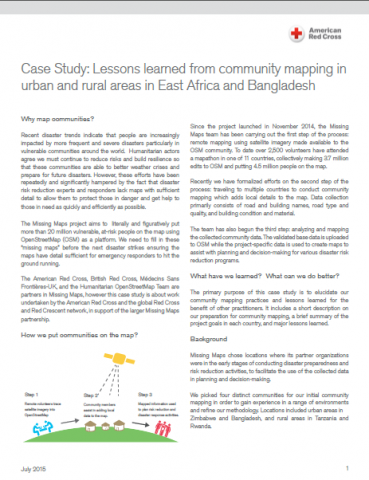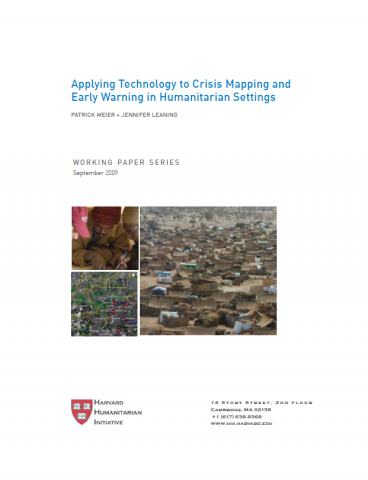Other type of resource
Applying technology to crisis mapping and early warning in humanitarian settings


The purpose of this Working Paper on Crisis Mapping is to briefly analyze the current use, and changing role, of information communication technology (ICT) in conflict early warning, crisis mapping and humanitarian response. We demonstrate that ICTs have the potential to play an increasingly significant role in three critical ways by: facilitating the communication of information in conflict zones, improving the collection of salient quantitative and qualitative conflict data, and enhancing the visualization and analysis of patterns.
– Harvard Humanitarian Initiative, 2009
